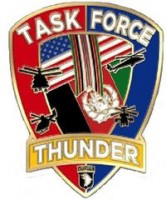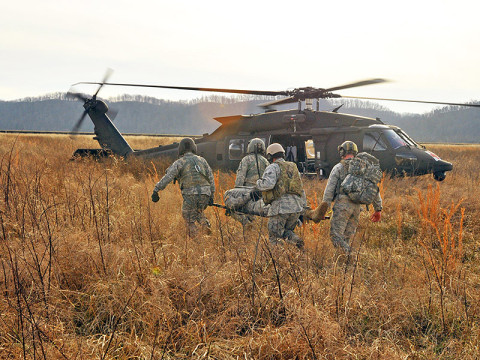Written by Capt. John Giaquinto
159th Combat Aviation Brigade Public Affairs


Fort Knox, KY – Whoop… whoop… whoop. To any person off the street the sound of helicopter blades would be heard as just noise, but to injured soldiers on the battlefield, that sound is one that brings hope. Medical evacuation operations are one of many key functions of an aviation unit.
The 7-101st General Support Aviation Battalion, 159th Combat Aviation Brigade, 101st Airborne Division from Fort Campbell, KY, conducted this essential training on January 9th, 2013.

The 7-101st took this training a step further to make it more realistic by incorporating multi platform aircraft and Air Force Joint Terminal Attack Controllers.
JTAC airmen are highly trained controllers that work in forward positions directing the actions of combat aircraft in offensive operations. They can act as liaisons between air assets and ground forces. For this exercise they were dropped off at a remote location to identify the injured soldier and call for a Medevac.
“Exercises like this help keep us current and allows us to come together to understand what each service has to offer,” said Senior Airmen James Raxter.
While members of the JTAC airmen were radioing in for medical evacuation support an Apache attack helicopter circled overhead providing security for the team and for the incoming Black Hawks. The Black Hawks are signaled in by the JTAC team, once loaded the wounded warrior is flown back to base where he will be examined by a medical team. Multi platform training, incorporating more than one type of airframe, produces the most realistic for the service members allowing them to train as they fight.
“The use of multiple airframes along with ground forces helped to make these scenarios as realistic as possible,” said Sgt. Anthony Fruge, a Black Hawk crew chief.
“This training event was meant to build trust and confidence within the formation. Having multiple platforms and different services working together to accomplish the mission helps to foster those great relationships.” said Lt. Col. Scott Halter, 7-101st Bn commander.
Field exercises such as these help to better prepare service members for scenarios they may face in combat.


